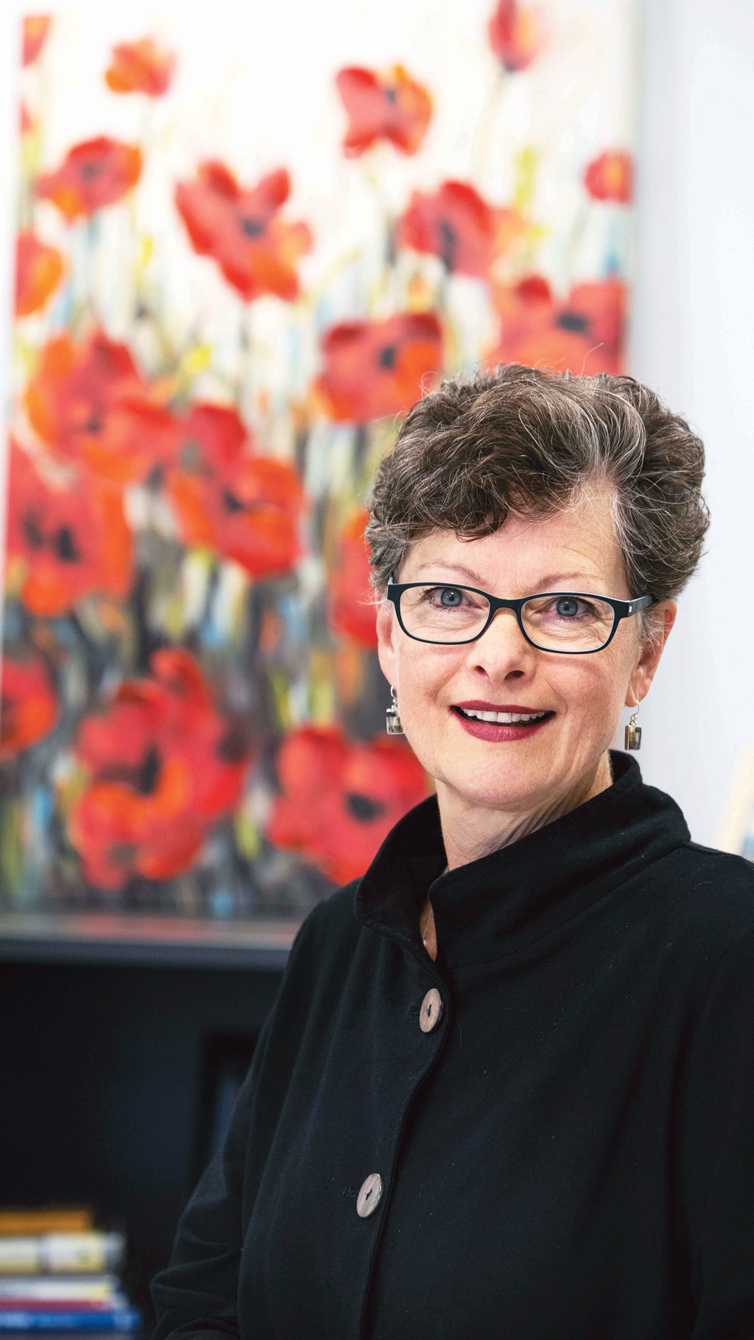When it comes to understanding generational differences in the workplace, there can be some danger in generalizing, says Jenny Whitener, founder and CEO of Bridge Innovate, a Chattanooga-based business consultancy.
"I might be physically 61, but I'm operating like a 45-year-old," Whitener says. "I don't want someone to put me in a box."
Whitener stopped coloring her hair during the pandemic, and had a few uncertain moments wondering if her gray would cost her some credibility, she says.
"It did make me anxious, but I have great friends and colleagues who accept me and see beyond my gray hair to the things I bring to the table," she says. "That's what is needed from all of us, is to really see people for what they bring to the table, and not pigeonhole individuals based on their age."
But there is also power in understanding commonalities across generations in terms of shared cultural experiences and characteristics, she says.
"We need to take a moment to understand these generational categories, their communication styles, their desires, their needs and values, and adapt inside our organizations to meet and adjust to those needs," she says.
Luke Plating, 25, a research and engagement leader for Bridge Innovate, sees the differences across generations even among his siblings. Plating grew up with modern technology, but also remembers the buzz and crackle of dial-up internet, unlike his younger siblings, who are 23, 20 and 13.
"I'm the second-oldest in my family, so my siblings are Gen Z," Plating says. "It is funny how independent that generation seems - so many want to be content creators and do their own thing."
As long as people are open to new ideas and perspectives, there's real power in intergenerational teams, Whitener says.
"Luke has launched several new capabilities for us that we've never done before," she says. "An intergenerational team, they see things I don't see, they are able to maximize speed and technology more quickly than I do."
But there's an important flip side to that dynamic in what he learns from Whitener, Plating says.
"A lot of that technology comes very easily to me, but she has this wealth of experience and stories and knowledge," he says.
Breaking it down
Generational lines are a little variable, depending on the source.Pew Research Center definitions:* Traditionalists or Silent Generation: Born 1928-1945. (ages 76-93) (17-year span)* Baby Boomers: Born 1946-1964. (ages 57-75) (18-year span)* Generation X: Born 1965-1980. (ages 41-56) (15-year span)* Millennials or Gen Y: Born 1981-1996. (ages 25-40) (15-year span)* Gen Z, iGen, or Centennials: Born 1997-2015. (ages 6-24) (18-year span)Purdue University definitions:* Traditionalists: born 1925-1945 (ages 76-96) (20-year span)* Baby Boomers: born 1946-1964 (ages 57-75) (18-year span)* Generation X: born 1965-1980 (ages 41-56) (15-year span)* Millennials: born 1981-2000 (ages 21-40) (19-year span)* Generation Z: born 2001-2020 (ages 1-20) (19-year span)
The pandemic has made it far more challenging to engage and develop a multi-generational workforce, particularly for teams working from home, Whitener says.
"For many people it's been isolating, for others it's been liberating," she says. "How do they engage that team into a unifying culture when they're all working from independent locations?"
In working with her clients, Whitener helps reimagine talent recruitment and retention strategies that may have been in place for years, she says.
"I think that generally people have difficulty breaking patterns," she says. "If they have patterns in engaging, recruiting, performance management processes, to change those patterns, to look at new, more creative approaches that might be more inspirational and adaptive, that might make people uncomfortable."
Who we are
Traditionalists, who make up about 2% of the workforce, are loyal and tactful, and motivated by respect and recognition.Baby boomers, who make up 25% of the workforce, have been shaped by the Civil Rights movement and the Vietnam War. They prioritize loyalty, duty and a willingness to sacrifice for success.Gen X, about 33% of the workforce, value diversity, work/life balance, and are a flexible and independent generation.Millennials are 35% of the workforce. They’re competitive but civic and open-minded, and they value work/life balance. They’re very engaged with technology, though they recall the transition from an analog world to a digital world.Gen Z, about 2% of the workforce, is the first generation to grow up with full access to modern technology. In fact, they have grown up immersed in it, and they’re driven by diversity, personalization, individuality.Source: Bridge Innovate, Purdue University
But younger generations are "continuous learners," and organizations who want to attract them need to keep up, Whitener says.
"It's OK to categorize to understand us, but by understanding we should reach out to include all these diverse perspectives to create really bold talent plays," she says.
READ MORE
* Time to sell: Baby boomers put their businesses on the block


